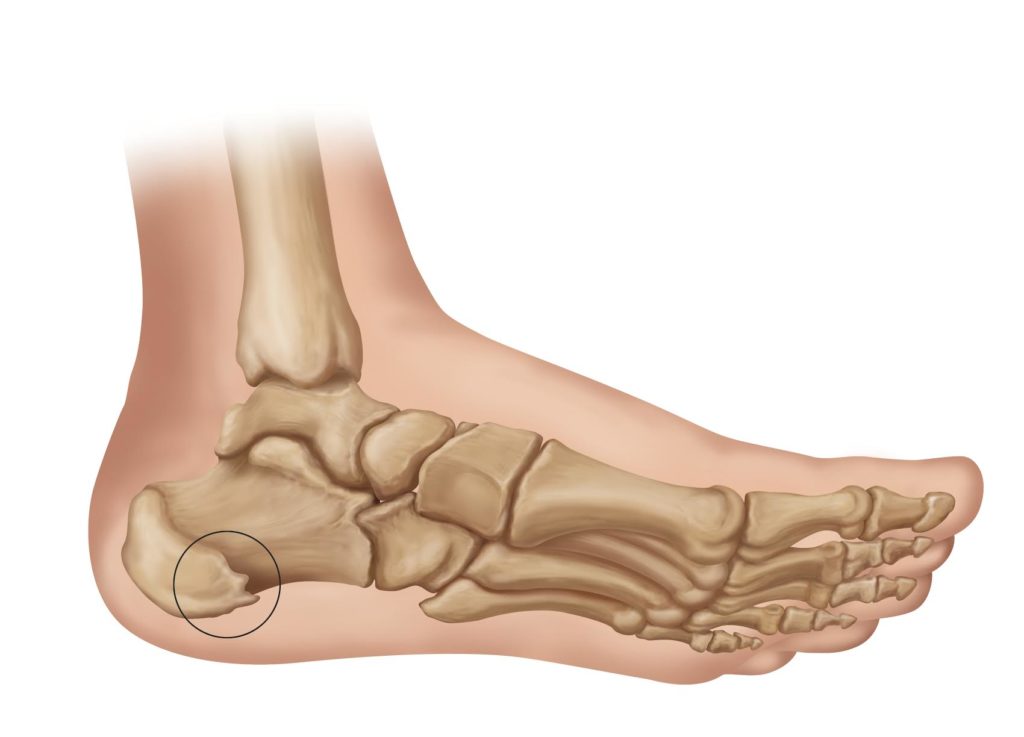Heel spurs: Think of them as the great whites of the feet. Stealthy, with a sharp little fin that can surface and cause a lot of pain and damage.
What do we really know about this painful condition that can lurk below the surface of your feet?
We’ve compiled some of the most interesting facts and statistics about heel spurs to help you learn what they’re really all about. Because, like great whites, they’re a lot easier to handle, coexist with, and avoid when you understand a little more about them!
Reduce heel spur pain with our 100% guaranteed Heel Seat inserts!
1. Heel Spurs Can Cause Morning Heel Pain
If you have plantar fasciitis, you’re all too familiar with morning pain–those first excruciating steps after getting out of bed. Why? Heel spurs are often enemy #1 as they dig into already-tender tissue for the first time after a period of inactivity.

2. Heel Spurs Become More Common As We Age
Studies across the board reveal that heel spurs are far more common in both men and women as they age. Large heel spurs are much more prevalent in people who are older than 40.
3. Heel Spurs Don’t Always Cause Pain

Approximately 38 percent of the population has a heel spur–but many don’t even know it! One study that spanned 45 years found that that heel spurs weren’t ever the cause of pain for many people who had them.
4. Heel Spurs are Common in Plantar Fasciitis Sufferers
While heel spurs and plantar fasciitis don’t always go hand in hand, About 70 percent of people with plantar fasciitis do have painful heel spurs. It’s thought that the body creates heel spurs as a protective measure in response to damage to the plantar fascia.
5. Heel Spurs are the Body’s Attempt to Protect the Fascia
Interestingly enough, researchers believe that heel spurs are actually the body’s attempt to protect the plantar fascia and other tissue from damage and strain. When damage occurs, cells are called to the area and begin depositing calcium. Over time, these deposits can build up into sharp protrusions that hurt, not help.
6. Heel Spurs Can Occur In Different Places

Heel spurs form on the bottom of the heel, while bone spurs caused by Achilles tendonitis form along the back of the heel. Despite the fact that these conditions are different, studies have found a moderate correlation between them.
7. Women Are More Likely to Develop Heel Spurs
Ladies aren’t so lucky when it comes to heel spurs. Studies find that women are more likely to develop heel spurs than men. Why? Some have theorized that it’s because of the types of shoes women are more likely to wear, which can damage the plantar fascia and cause heel spurs.
8. The Connection Between Heel Spurs and Osteoarthritis
Heel spurs are also more common in individuals with Osteoarthritis, the most common form of arthritis. This degenerative condition erodes away the cartilage at the joints. As the body scrambles to compensate for the loss of cartilage, it may develop painful bone spurs
.
9. Weight and Heel Spurs
There’s also a connection between individuals who are overweight and the development of heel spurs. Since more weight means more impact and strain to the arches of the feet and the tissue of the heel, damage is more likely as well–which can trigger the onset of heel spurs.
10. Hope for Recovery
The good news is that 90 percent of people who experience painful heel spurs are able to recover without surgical intervention, by changing their footwear, addressing causes like plantar fasciitis using orthotic inserts, and even taking supplements that help the body more effectively use nutrients and minerals.
While heel spurs can still be an unsettling and painful condition, the more you know about their causes, symptoms, and treatment, the more equipped you’ll be to manage them!




I have three spurs on each heel. The heel cup wraps saved my life…..they are amazing!
My heal spurs are on the back of my heel near my Achilles I can’t find any info in that area ??
Signed up for the Heel Spur fact sheet but didn’t get it.
Thanks for the note – I sent it to you from my personal email. Please don’t hesitate to reach out if you don’t see it!
Got plantar fasciitis from running with poorly cushioned shoes. Went back to running when I thought it was nearly healed, trying to protect the heel by putting more weight on the front of my foot. Got a fractured second metatarsal. Seven months injured in total. The moral: wear well cushioned shoes; give injuries a chance to heal; don’t change one part of your running style without advice.
I have had heel pain for 3 months now. I have rung the Dr. and he said that it was most likely Plantar facitis. I have spent a fortune on insoles etc and taken paracetamol, ibuprofen and cocodamol to no avail. Also done stretching exercises etc.
This morning I went to A & E and was given an Xray which showed that I had a heel spur. It is now difficult to walk now except on my toes on the right foot.
I have been told to go back to my Dr and he will hopefully refer me to a specialist.